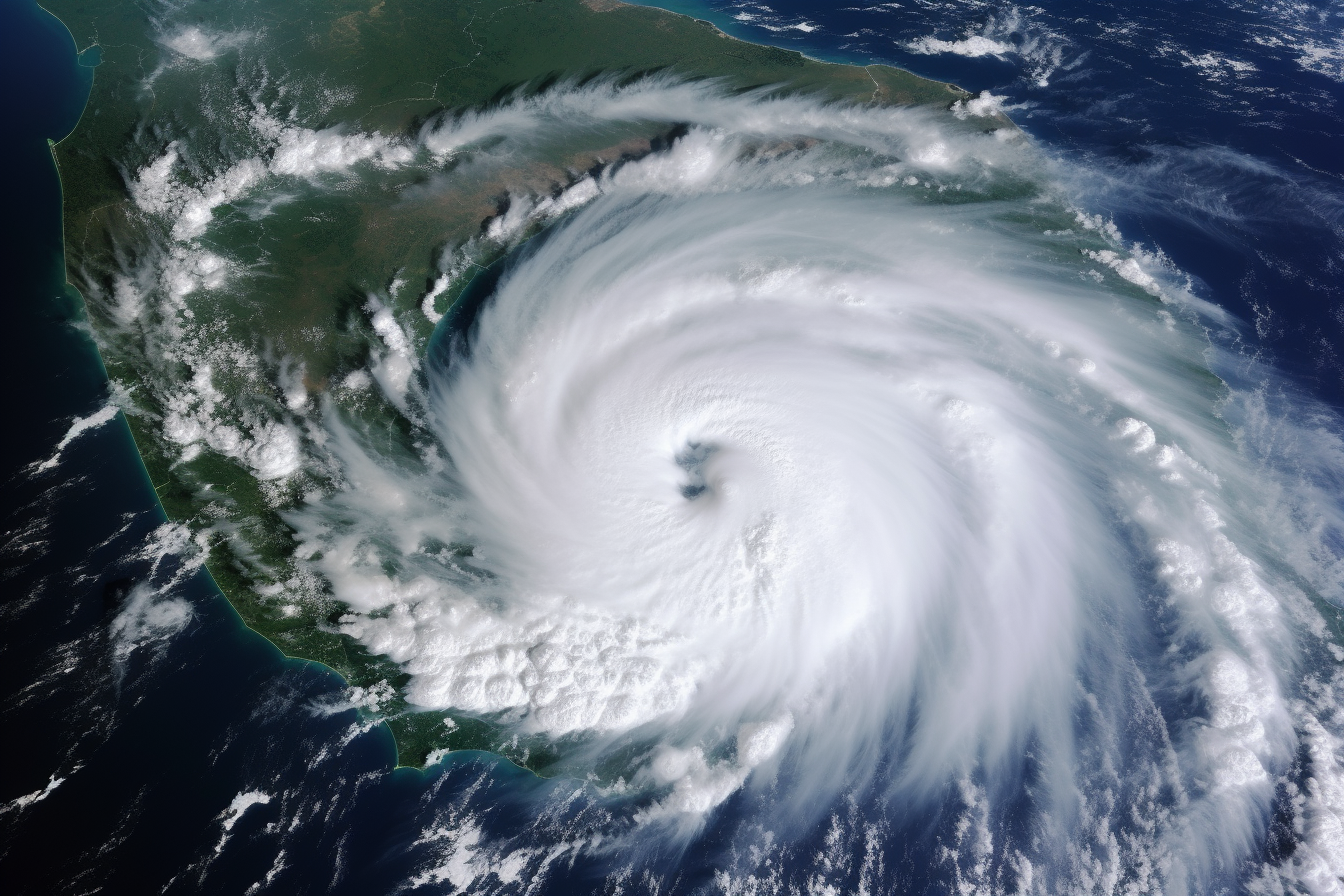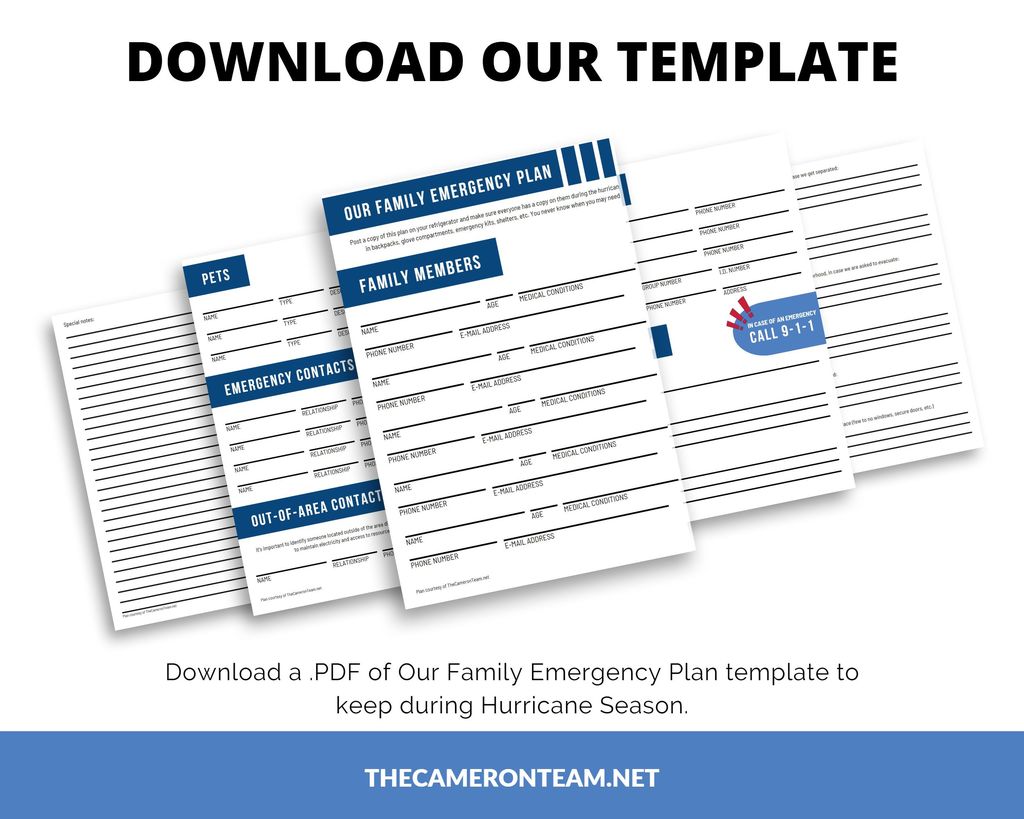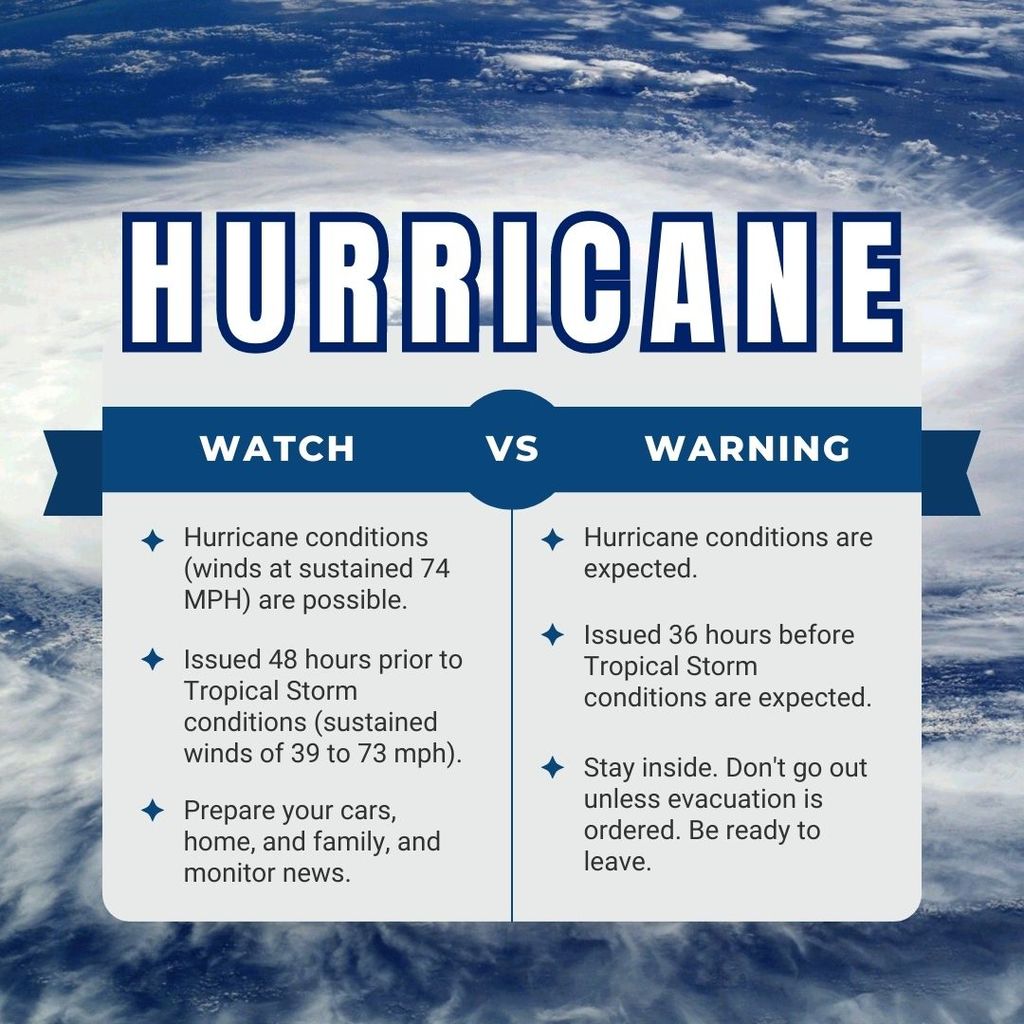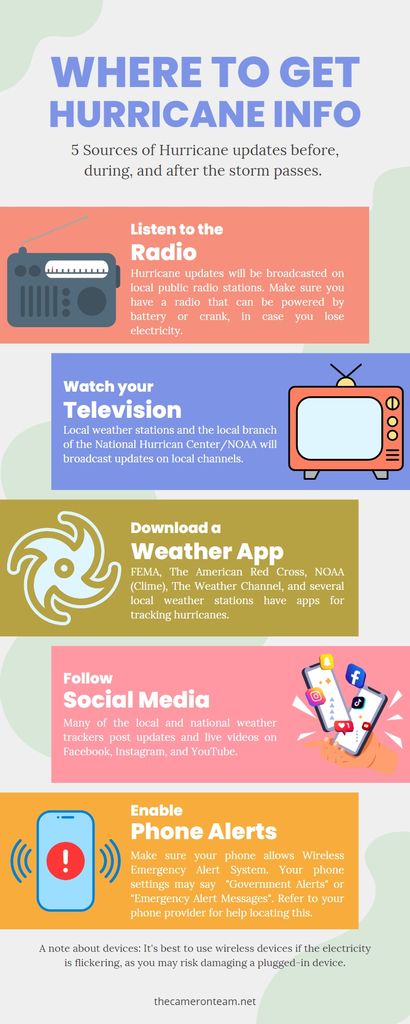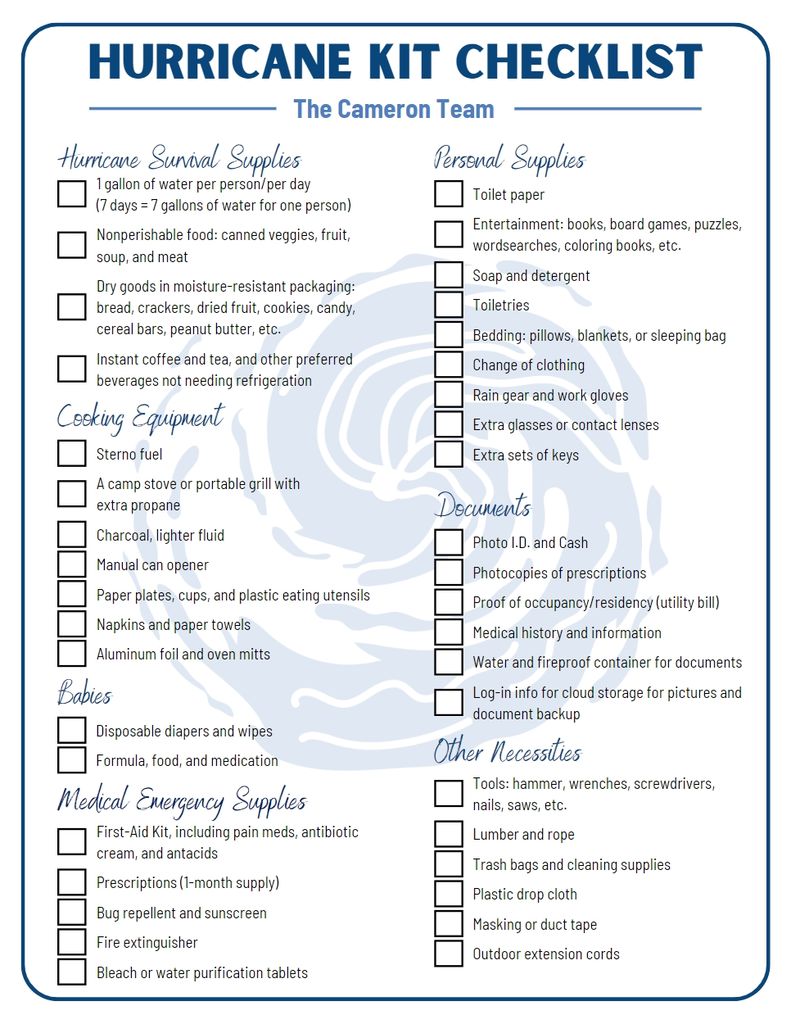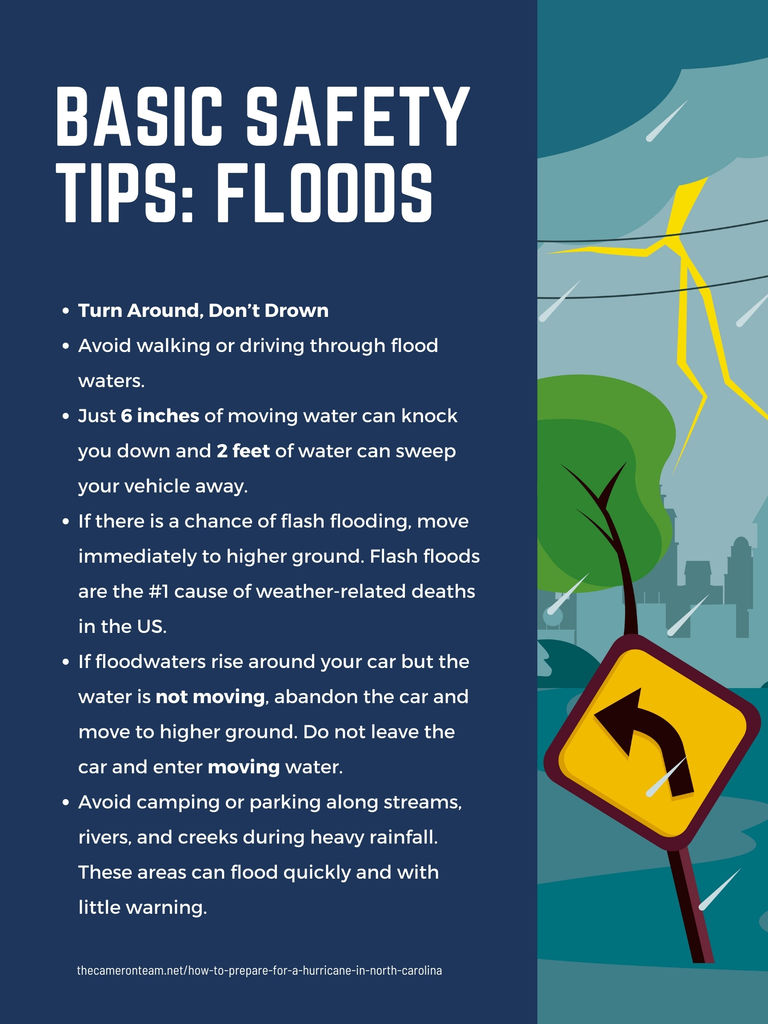Living in coastal North Carolina, you know that hurricanes can be a fact of life, and being ready can make all the difference. So, let’s dive into how you can protect your home and loved ones when a hurricane is on the horizon.
Know Your Hurricane Risk
Understanding your hurricane risk is the initial and most pivotal step in your preparation. Hurricanes pose a substantial threat that extends far beyond the boundaries of coastal regions. Indeed, these powerful storms can generate an array of potentially hazardous conditions, from torrential rainfall that can lead to flooding, to powerful winds capable of causing extensive structural damage. Additionally, hurricanes can even trigger the formation of tornadoes, adding another layer of risk to the situation.
These effects can reach far inland, making it a widespread concern rather than an issue limited only to those residing on the coastline. It is a common misconception that living inland absolves one from the dangers posed by hurricanes. However, the reality is that the effects of a hurricane can be felt many miles from the coast, leading to disruptions and potential hazards in areas that might not initially seem at risk.
NOAA’s Coastal Flood Exposure Mapper
As such, preparedness is key, regardless of your proximity to the coast. Whether your home is a stone’s throw from the beach or nestled further inland, understanding the risks associated with hurricanes is essential. By doing so, you can ensure that you are adequately prepared to protect your home and loved ones when hurricane season arrives.
Make an Emergency Plan
Establishing a comprehensive emergency plan is a fundamental aspect of hurricane preparedness. Such a plan acts as a roadmap, guiding your actions and decisions when a hurricane hits, and ensuring that all members of your household are on the same page. It’s not simply about knowing what to do when a hurricane approaches your home, but about having a clear and detailed strategy that everyone in your household fully comprehends.
Your emergency plan should be broad in scope, considering all aspects of your daily life. This means it shouldn’t only focus on your home, but also extend to other places that you and your family frequently visit. Think about offices where you work, daycares where your children spend time, schools, and any other locations that are part of your routine.
Each of these places should have a specific plan of action within your broader emergency strategy. For instance, you should know the hurricane protocols of your children’s daycare or your office and how they integrate with your personal plan. You should also establish a clear communication strategy so that everyone can stay in touch and updated in case normal lines of communication are disrupted.
If you are a business owner, your emergency plan should also encompass a continuity plan for your business. In the face of a hurricane, operations could be interrupted, potentially leading to significant financial losses. A robust continuity plan would outline how your business can continue its critical operations during and after the disaster, helping to mitigate economic damages and ensuring a smoother recovery. This could include provisions for remote work, backup suppliers, data protection strategies, and a post-disaster recovery plan.
In essence, a well-crafted emergency plan is more than just a set of instructions for when a hurricane hits. It’s a comprehensive strategy that considers all aspects of your life, ensuring that you are prepared for the impact a hurricane can have on your home, your routine, and your business.
Know Your Evacuation Zone
Living in an evacuation zone adds an extra layer of complexity to hurricane preparedness. These areas are identified as being at higher risk of severe impacts from hurricanes, which may necessitate swift and immediate evacuation when a storm is imminent. If you reside in one of these zones, it’s crucial to be prepared for the possibility of having to leave your home at a moment’s notice.
To do this effectively, familiarization with your designated evacuation routes is a must. It’s not enough to just know them – you should practice evacuating along these routes with all members of your household, including your pets. This kind of practice can help to reduce panic and confusion in a real evacuation scenario, enabling you to leave quickly and efficiently when the order comes.
Also, it’s important to have a clear plan for where you will go once you’ve evacuated. This might be a local storm shelter, a hotel outside the danger zone, or perhaps the home of a friend or family member in a safer area. Your destination should be easily reachable via your evacuation routes and should be equipped to accommodate everyone in your household, including pets.
Listening to and following the guidance of local emergency managers is another essential part of the process. These professionals work hand-in-hand with a network of state, local, tribal, and territorial agencies and partners to monitor the situation and provide up-to-date recommendations tailored to the specific threats facing your community. They are your most reliable source of information on the appropriate safety measures to take during a hurricane.
In essence, if you live in an evacuation zone, being ready for a hurricane is not just about preparing your home, but also about preparing to leave it. This means knowing your routes, practicing your exit, identifying your safe location, and staying tuned in to the advice and instructions of local emergency authorities.
Recognize Warnings and Alerts
Having multiple channels through which to receive alerts is a vital part of hurricane preparedness. Receiving information from multiple sources helps ensure you don’t miss critical updates, no matter where you are or what you’re doing when a hurricane approaches.
One practical step you can take is to download the FEMA app on your smartphone or tablet. This application provides real-time alerts from the National Weather Service for up to five locations across the nation. This feature is especially useful if you have loved ones in different areas or travel frequently, as it allows you to keep an eye on potential hurricane threats in multiple places simultaneously.
In addition to the FEMA app, it’s beneficial to sign up for local community alerts. These notifications, which can often be sent directly to your phone or email, provide targeted information specific to your area. They can include updates about the severity of the approaching hurricane, evacuation orders, changes in evacuation routes, locations of emergency shelters, and more. These alerts are curated by local emergency management officials, ensuring you have the most relevant and timely information at your fingertips.
But even without signing up for specific services, you can still receive critical alerts through the Emergency Alert System (EAS) and the Wireless Emergency Alert (WEA) system. The EAS is a national public warning system that broadcasts alerts via radio, television, and connected devices. The WEA, on the other hand, sends text-like messages directly to WEA-capable mobile devices. Neither of these systems requires sign-up, ensuring that everyone, even those without access to the internet or smartphone apps, can receive life-saving information.
In essence, staying informed about a hurricane’s progress and its potential impact on your area is a multi-faceted process. By leveraging tools like the FEMA app, local community alerts, the EAS, and the WEA, you can create a robust network of information sources, significantly increasing your chances of receiving and acting on critical updates in a timely manner.
Strengthen Your Home
Fortifying your home to withstand the potential impact of a hurricane is a significant aspect of hurricane preparedness. Several practical measures can be taken to reduce the risk of damage and ensure your home is as resilient as possible.
One of these measures is the regular maintenance and decluttering of your home’s drains and gutters. This is especially important in the lead-up to a hurricane, as blocked drainage systems can lead to water accumulation and potential flooding. Regularly clearing out leaves, twigs, and other debris from your gutters can facilitate effective rainwater flow, reducing the risk of water damage to your home.
Furthermore, anything that isn’t securely fastened and can be picked up by strong winds should be brought inside. This includes patio furniture, potted plants, and other outdoor items. Loose objects can become dangerous projectiles in hurricane-force winds, potentially causing significant damage to your home and posing a risk to personal safety.
Investing in hurricane shutters is another step you can take to safeguard your home. These are particularly beneficial for homes in areas prone to frequent or severe hurricanes. They provide an extra layer of protection for your windows, which are among the most vulnerable parts of your home during a storm. These shutters can prevent wind and debris from breaking your windows, which could lead to dangerous situations and increased damage.
Home generators are a great investment when you live in an area frequented by hurricanes. Not only can they help you keep your cell phone charged when you’re without electricity, but they can also help power appliances, fans, and other necessary electronic equipment. It’s not uncommon to lose electricity for days after a hurricane blows through, so you should prepare for that time frame as well, not just the hours of the storm. Also, never run a generator inside your home or garage. Deadly levels of carbon monoxide (CO) can quickly build up and linger. This can have deadly effects on your health.
In sum, preparing your home for a hurricane involves a combination of regular maintenance, strategic investments, and practical measures. By decluttering drains and gutters, securing outdoor items, considering hurricane shutters, and ensuring you have a way to charge your electronics, you can significantly enhance your home’s resilience to hurricanes.
Prepare Your Hurricane Kit
Every home should be equipped with a comprehensive emergency supply kit as a fundamental part of hurricane preparedness. This kit should be thoughtfully curated, encompassing a wide range of items designed to meet basic survival needs, aid in communication, and maintain hygiene and comfort during a hurricane.
The cornerstone of any emergency kit is a sufficient supply of water and non-perishable food. Each person should have one gallon of water per day for several days, for both drinking and sanitation purposes. The food should be able to sustain each member of the household for several days and not require refrigeration or cooking.
To keep abreast of critical updates and emergency broadcasts, your kit should include a battery-powered or hand crank radio, preferably a NOAA Weather Radio with tone alert. A flashlight and extra batteries are also essential for navigation and tasks during power outages.
A well-stocked first aid kit can handle minor injuries and ailments, while a whistle can be used to signal for help in case you’re trapped or stranded. A dust mask can help filter contaminated air, and plastic sheeting coupled with duct tape can create a makeshift shelter if needed.
Sanitation is another key consideration in your kit. Items such as moist towelettes, garbage bags, and plastic ties can help manage waste and maintain cleanliness. Utility tools like a wrench or pliers are vital for turning off utilities if necessary, and a manual can opener is a must-have for accessing canned food.
Local maps can assist with navigation, especially if digital GPS services are unavailable. A cell phone with chargers and a backup battery is crucial for communication and receiving emergency alerts.
However, a successful emergency kit doesn’t stop at these basics; it should be personalized to meet the specific needs of your household. This could mean including prescription medications, masks, soap, hand sanitizer, and disinfecting wipes. If you have pets, remember to pack pet food and extra water for them.
Your emergency kit is not a “set it and forget it” item. It requires regular maintenance to ensure its effectiveness. Check the kit periodically to replace expired items, refresh food and water supplies, and update the kit to match changes in your family’s needs or situation. By doing this, you ensure that your emergency supply kit remains a reliable resource in times of need.
Documenting Your Home for Insurance Purposes
Documenting your home for insurance purposes is a critical step in hurricane preparedness and recovery, and it’s best carried out both before and after the hurricane hits.
Before the hurricane, it’s advisable to conduct a detailed documentation of your property’s condition. This involves taking clear, well-lit photos or videos of both the exterior and interior of your home. Pay special attention to high-value items such as electronics, jewelry, antiques, or any other items of significant worth. This visual record should be supplemented with a comprehensive inventory of your belongings, noting the estimated value of each item wherever possible. This preemptive measure provides a robust baseline for comparisons between the state of your property before and after the hurricane, aiding in accurate damage assessments. It’s a good idea to make sure all pictures, videos, and documents are uploaded to a cloud service (OneDrive, Dropbox, iCloud, etc.), in case your device is damaged.
Following the hurricane, make it a priority to get in touch with your insurance company to report the damage. Again, it’s crucial to visually document the damage by taking photographs or videos. When doing this, be as thorough as possible, capturing all areas of damage. However, always prioritize your safety – don’t put yourself in danger to capture these images.
Be wary in the aftermath of a storm, especially when dealing with contractors who show up at your door offering immediate clean-up and debris removal services. In the chaos following a natural disaster, it’s unfortunately common for unscrupulous individuals to take advantage of homeowners. Always ask for identification, verify their credentials, and refrain from signing any contracts without first contacting your insurance adjuster.
Remember, your insurance company is an ally in this process. They can guide you on what is covered under your policy and the steps necessary for filing a claim. By being proactive and thorough in documenting your property, you can help ensure a smoother and more efficient claims process should a hurricane cause damage to your home.
Conclusion
Staying safe during a hurricane is of utmost importance. If you live in a mandatory evacuation zone and local officials tell you to evacuate, do so immediately. In case of high winds and flooding, take refuge in a designated storm shelter or an interior room. Do not walk, swim, or drive through flood waters.
After a hurricane, pay attention to local officials for information and special instructions. Be careful during clean up and wear protective clothing. Do not touch electrical equipment if it is wet or if you are standing in water. Also, save phone calls for emergencies and use text messages or social media to communicate with family and friends.
Keep in mind that flooding can happen after a hurricane has passed by. All the rain that has dropped needs to go somewhere. As the flooding recedes, it enters the rivers and flows back out to the ocean. Properties along the rivers are affected, including roads that go over or near the rivers. This can cause road closures, affecting travelers returning home after an evacuation or trying to restock their supplies. That’s one reason why it’s so important to take into consideration the days following the hurricane.
While there is no surefire way to completely protect your home from a hurricane, being prepared can significantly help minimize damage and keep you and your family safe. Remember that no two hurricanes are the same and a category 1 hurricane can still be very damaging (Hurricane Florence was a category 1 hurricane at the time of landfall).

